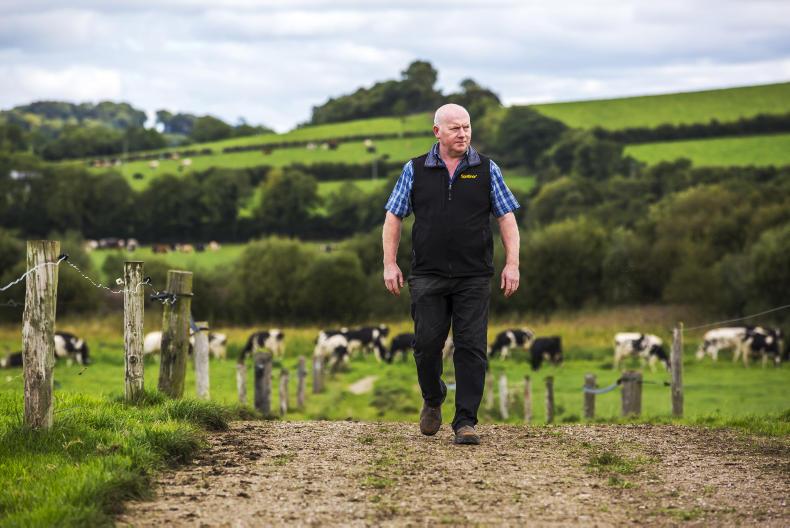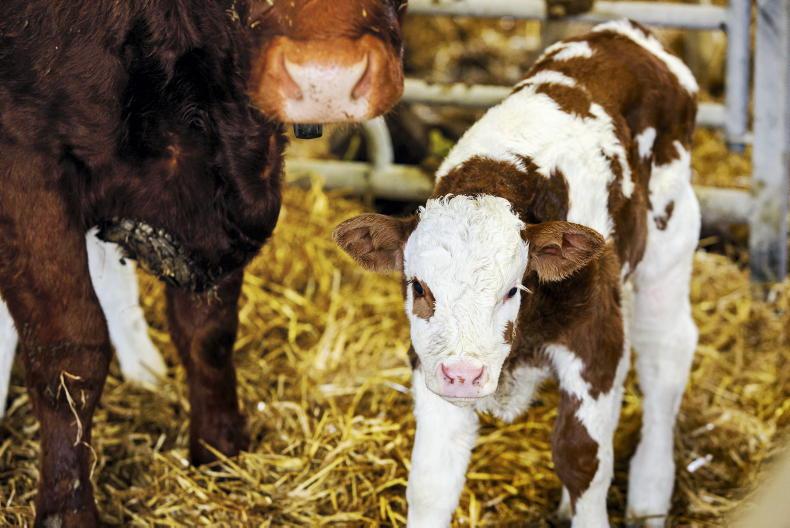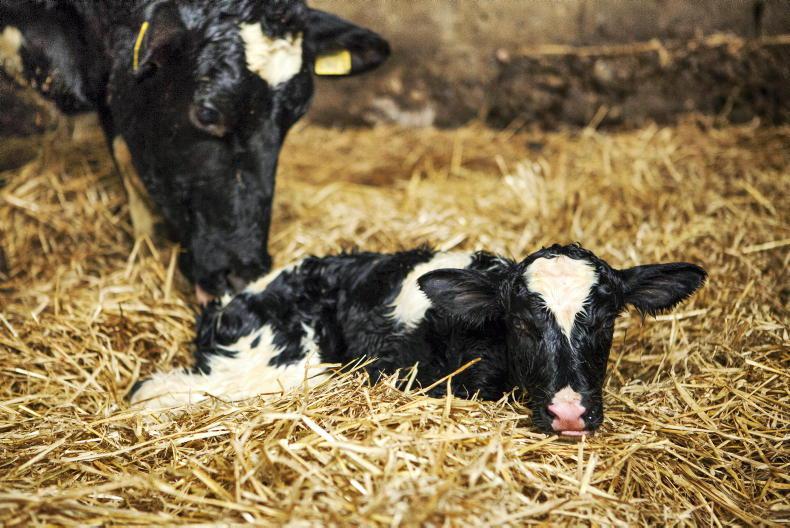The plan on most programme farms is to start the last grazing rotation this weekend to ensure that grass is available to begin grazing once conditions allow in the spring.
Farms on heavier soils have already started the final grazing round and several programme farms have cows housed at night to keep dry matter intakes up.
During the final round, cows should be going into drier paddocks with good lane access first so that grass is available in these paddocks early in the spring.
Exact target covers for individual farms depends on stocking rate and land type. Dairylink Ireland adviser Conail Keown says that most programme farmers are aiming for an average farm cover of 1,150kgDM/ha (available) at present with a grazing rotation length of 35 to 40 days.
If conditions deteriorate in October and cows need housed sooner than planned, heifers can be used to graze off heavier covers on the milking platform.
The target on most programme farms is a closing average farm cover of 650kgDM/ha around the first week of November.
Several of the new phase two participants on the Dairylink Ireland programme recently started weekly grass measuring. Measuring will continue each week up until the grazing block is closed and will begin ahead of turnout in the spring.
On Frank Goodman’s farm near Carrickmacross, Co Monaghan, cows are still at grass full-time but will be housed at night within the next week. The plan is to start the final round on 1 October and get cows back at grass around mid-February.
Slurry that can be applied after cows during the final round can be beneficial for growth when ground conditions and open periods for spreading organic manures allow.
Weekly roundup
Most Dairylink farms are closing up paddocks from 1 October.Cows have been housed at night on several programme farms.Baled silage is being made on some farms this week.Silage samples are being analysed ahead of winter feed planning.Slurry is being spread on silage ground and closed up grazing paddocks.Farmer focus: Frank Goodman, Carrickmacross, Co Monaghan

Dairylink farmer Frank Goodman. \ Philip Doyle.
Cows numbers have increased in recent years with the milking herd rising from 75 cows during 2017 to 93 this year. Cows are mostly Holstein bred and the herd has pedigree status. However, there are some British Friesian genetics in some cows too.
The average yield is currently sitting just short of 8,000 litres/cow from 2t of concentrates.
Both yields and concentrate feeding have increased in recent years as we try to push output from a limited grazing block.
There is a 30ac block around the yard and another 20 acres across the road which we can walk cows to. After that, the rest of the farm is fragmented and is laid out in various outfarms.
Overall, we are farming 185 acres with around one-third of this rented ground.
Silage, maize, dry cows and heifers are all on outfarms and only milking cows are on the 50 acres near the yard.
Calving started last week and there are five cows calved so far. There are 15 cows due to calve this autumn and the rest of the herd is due in the spring.
Calving will begin at the end of January and will be finished by the end of April.
As the herd has been expanding over the past few years, I have been a bit lenient with letting the odd cow that is slow to get in-calf move between the two groups, but this is something that I want to get away from as the herd stops growing.

Cows are still at grass full-time but will be housed by night within the next week on Frank Goodman's farm.
At present, the plan is to increase the autumn-calving group to receive winter bonus payments. I won’t be able to get enough milk produced this year to meet the minimum production threshold to avail of the winter bonus.
In the future, if a third of cows calved in the autumn I should meet the threshold when the stale spring calvers are added in.
Building autumn-calving numbers could be a slow process as there aren’t many heifers coming forward that will calve down in this group.
I do not like calving heifers at two and a half years old as they are generally harder to get in calf again and don’t last as long as two-year-old calvers.
An option is to buy in 10 or a dozen springing heifers that are due to calve down this autumn. If I decide to proceed with this, I will sell off some store beef cattle on an outfarm to free up winter feed stocks for the extra milking cows.
We have 21 acres of maize on an outfarm that should be ready for harvesting in a fortnight.
It got a bit of damage during last week’s storm but thankfully it wasn’t flattened.
There are also 13 acres of grass silage to cut and bale next week.
When these bales are made, and the maize is harvested, we should be left well enough stocked for winter feed.
Read more
Dairylink: updating fodder budgets in Co Antrim
Recent dairy entrant joins Dairylink project
Dairylink: a new phase gets under way
The plan on most programme farms is to start the last grazing rotation this weekend to ensure that grass is available to begin grazing once conditions allow in the spring.
Farms on heavier soils have already started the final grazing round and several programme farms have cows housed at night to keep dry matter intakes up.
During the final round, cows should be going into drier paddocks with good lane access first so that grass is available in these paddocks early in the spring.
Exact target covers for individual farms depends on stocking rate and land type. Dairylink Ireland adviser Conail Keown says that most programme farmers are aiming for an average farm cover of 1,150kgDM/ha (available) at present with a grazing rotation length of 35 to 40 days.
If conditions deteriorate in October and cows need housed sooner than planned, heifers can be used to graze off heavier covers on the milking platform.
The target on most programme farms is a closing average farm cover of 650kgDM/ha around the first week of November.
Several of the new phase two participants on the Dairylink Ireland programme recently started weekly grass measuring. Measuring will continue each week up until the grazing block is closed and will begin ahead of turnout in the spring.
On Frank Goodman’s farm near Carrickmacross, Co Monaghan, cows are still at grass full-time but will be housed at night within the next week. The plan is to start the final round on 1 October and get cows back at grass around mid-February.
Slurry that can be applied after cows during the final round can be beneficial for growth when ground conditions and open periods for spreading organic manures allow.
Weekly roundup
Most Dairylink farms are closing up paddocks from 1 October.Cows have been housed at night on several programme farms.Baled silage is being made on some farms this week.Silage samples are being analysed ahead of winter feed planning.Slurry is being spread on silage ground and closed up grazing paddocks.Farmer focus: Frank Goodman, Carrickmacross, Co Monaghan

Dairylink farmer Frank Goodman. \ Philip Doyle.
Cows numbers have increased in recent years with the milking herd rising from 75 cows during 2017 to 93 this year. Cows are mostly Holstein bred and the herd has pedigree status. However, there are some British Friesian genetics in some cows too.
The average yield is currently sitting just short of 8,000 litres/cow from 2t of concentrates.
Both yields and concentrate feeding have increased in recent years as we try to push output from a limited grazing block.
There is a 30ac block around the yard and another 20 acres across the road which we can walk cows to. After that, the rest of the farm is fragmented and is laid out in various outfarms.
Overall, we are farming 185 acres with around one-third of this rented ground.
Silage, maize, dry cows and heifers are all on outfarms and only milking cows are on the 50 acres near the yard.
Calving started last week and there are five cows calved so far. There are 15 cows due to calve this autumn and the rest of the herd is due in the spring.
Calving will begin at the end of January and will be finished by the end of April.
As the herd has been expanding over the past few years, I have been a bit lenient with letting the odd cow that is slow to get in-calf move between the two groups, but this is something that I want to get away from as the herd stops growing.

Cows are still at grass full-time but will be housed by night within the next week on Frank Goodman's farm.
At present, the plan is to increase the autumn-calving group to receive winter bonus payments. I won’t be able to get enough milk produced this year to meet the minimum production threshold to avail of the winter bonus.
In the future, if a third of cows calved in the autumn I should meet the threshold when the stale spring calvers are added in.
Building autumn-calving numbers could be a slow process as there aren’t many heifers coming forward that will calve down in this group.
I do not like calving heifers at two and a half years old as they are generally harder to get in calf again and don’t last as long as two-year-old calvers.
An option is to buy in 10 or a dozen springing heifers that are due to calve down this autumn. If I decide to proceed with this, I will sell off some store beef cattle on an outfarm to free up winter feed stocks for the extra milking cows.
We have 21 acres of maize on an outfarm that should be ready for harvesting in a fortnight.
It got a bit of damage during last week’s storm but thankfully it wasn’t flattened.
There are also 13 acres of grass silage to cut and bale next week.
When these bales are made, and the maize is harvested, we should be left well enough stocked for winter feed.
Read more
Dairylink: updating fodder budgets in Co Antrim
Recent dairy entrant joins Dairylink project
Dairylink: a new phase gets under way











SHARING OPTIONS